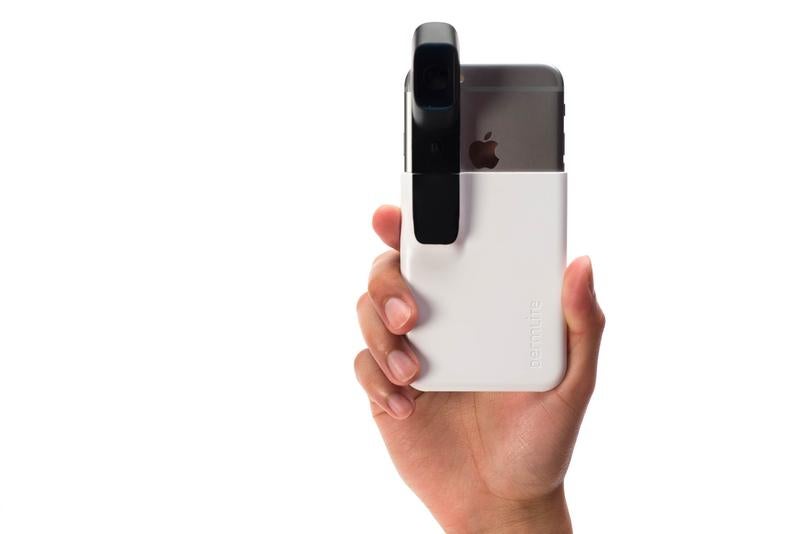You can do just about anything online these days: shop for groceries, get a college education, find a significant other, even see a doctor. Technology is a huge boon to a busy schedule — and, for that matter, an extended period of self-quarantine. With health-care practitioners everywhere trying to keep non-essential visits to an absolute minimum, many patients are turning to virtual doctor's appointments in their stead.
Not all forms of medicine are fit for a FaceTime call (you wouldn't want to have a virtual appointment with a cardiologist, for example), but dermatology is one field where it makes perfect sense. Some practices offer video consultations to the same patients they'd see in-house, using applications like Google Hangouts and Zoom to address your concerns as they would in an office.
AdvertisementADVERTISEMENT
Companies like Apostrophe and Curology have also innovated in the space, modernizing traditional telemedicine into a more affordable way to treat conditions like acne and rosacea without insurance premiums or copays. You can simply start an account any time via their websites and answer a series of questions and upload photos of your face, after which medical professionals will recommend an appropriate treatment plan, including topical medications typically only available with a prescription.
How are online dermatologists different from making an appointment in person?
First things first: Virtual visits are only to be used for non-emergency cases, like those related to acne, rosacea, or dry skin. Many times, the online option is preferred for follow-up appointments or quick check-ins to see how treatments are working. If there's a pressing issue, like a concerning mole or painful lesion, seeing a medical professional in person is always advised. That said, a real-time video could serve useful if you're unsure.
"What a person defines as an emergency is very different case by case, which is why it's important that they have virtual visits so that their dermatologist can figure out whether it is something urgent or something that they can manage from home," says Orit Markowitz, MD, associate professor of dermatology at the Icahn School of Medicine at Mount Sinai and director of the Pigmented Lesions and Skin Cancer in the Mount Sinai Department of Dermatology.
AdvertisementADVERTISEMENT
The modern teledermatology services echo the same in terms of what can be addressed via a virtual consultation and what can't. "We primarily treat skin issues such as different types of acne, rosacea, fine lines and wrinkles, etc.," says a brand representative for Apostrophe. "Our dermatologists recommend seeing an in-person physician for rashes and moles since there could be underlying health conditions."
What are the downsides of seeing an online dermatologist?
Well, there is a chance that you might have to go into your dermatologist's office after your virtual visit — which means two separate appointments, and possibly two co-pays. This only happens if a skin concern cannot be determined via camera, or if it seems more serious and will need to be checked out face-to-face.
"The skin is the largest organ of the body, with visual textures and a lot of 3D surface area. A skin examination can require touching and feeling the skin or skin lesion," says Purvisha Patel, MD, board-certified dermatologist and founder of Visha Skincare. "Not all telemedicine visits may result in a diagnosis, and the patient may need to come in for a biopsy or future testing." In the case of a website like Apostrophe, if a patient cannot be treated, they will be refunded their money. "If they believe you’d benefit from seeing an in-person dermatologist, they will let you know," says the brand rep.
That's not to say that diagnoses can't be made via webcam: By working with licensed professionals, you can still be diagnosed and receive treatment in these sessions. There are also tools available on the market that help doctors conduct better examinations from a distance, like an at-home dermatoscope, a handheld microscope that attaches to any smartphone.
AdvertisementADVERTISEMENT
Dr. Markowitz uses these devices in her office as well as in her telemedicine appointments, as they provide a more in-depth examination. "It enables me to do the job to the level of expertise that I would if even they were in my office," says Dr. Markowitz. "In video conference calls, you see that it's not as clear as sitting in front of an individual, so imagine that extra burden of having to catch it early so that you can manage it."
Are online dermatologists covered by insurance?
Because telemedicine is a recent development, some insurance companies may not cover online appointments yet — but for the most part, many major insurance providers do offer these benefits. As with any doctor, co-pays vary, but Dr. Markowitz says virtual appointments shouldn't be pricier than in-person. "It's actually often less expensive," she says. Be sure to check with the office and your insurer ahead of your appointment to ensure that there are zero surprises.
For newer teledermatology services that take out the face-to-face doctor-patient interaction, there is typically a straightforward visit fee that applies to all, as no insurance is needed. At Apostrophe, the cost is $20 that's then applied to your prescription purchase; prescriptions, which you can purchase following your appointment, range from $30 to $90.
How can I prepare for an online dermatologist appointment?
It's critical to do your research and find the right professionals for your appointment no matter what service you're using, especially since there are many "skin-care experts" who offer their services online at a premium without board certification or educational background. "There are no qualifications to setting up online visits, so make sure you vet out that you are seeing a board-certified dermatologist," says Dr. Patel. That shouldn't be hard to find, as Dr. Markowitz adds, "There are going to be plenty of board-certified dermatologists available for this type of visit."
AdvertisementADVERTISEMENT
Once you find the right doctor, you want to make sure that you're all set before the call, which includes cleaning the area of your skin that needs to be examined, having good lighting, and being in a quiet area. While it might seem like common sense, it's easy to forget to have your phone charged and on silent so the appointment isn't disrupted. If you're using a service that only requires you to send in photos, be sure to shoot clear, well-lit, and unfiltered photos to be properly assessed.
Ultimately, it's important to remember that time is of the essence — and online dermatology isn't about eliminating the concept of in-office visits, but having the option when it's necessary.
At Refinery29, we’re here to help you navigate this overwhelming world of stuff. All of our market picks are independently selected and curated by the editorial team. If you buy something we link to on our site, Refinery29 may earn commission.
AdvertisementADVERTISEMENT








